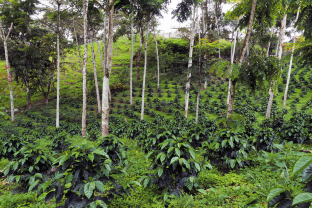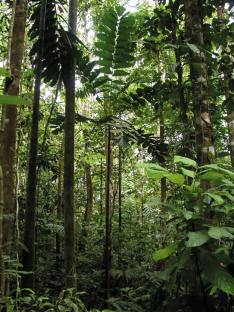Across the globe, increasing tree cover is a popular solution to offset carbon emissions. Replenishing trees is only part of the answer, and scientists seek an increased role as part of a multi-layered policy approach.
This is a preview of subscription content, access via your institution
Access options
Access Nature and 54 other Nature Portfolio journals
Get Nature+, our best-value online-access subscription
$29.99 / 30 days
cancel any time
Subscribe to this journal
Receive 12 print issues and online access
$209.00 per year
only $17.42 per issue
Buy this article
- Purchase on Springer Link
- Instant access to full article PDF
Prices may be subject to local taxes which are calculated during checkout

Morley Read / Alamy Stock Photo

Robin Chazdon
References
Dave, R. et al. Nature 570, 164 (2019).
Griscom, B. W. et al. Proc. Natl Acad. Sci. USA 114, 11645–11650 (2017).
Jiang, M. et al. Nature 850, 227–231 (2020).
Bastin, J.-F. et al. Science 365, 76–79 (2019).
Cook-Patton, S. C. et al. Nature 585, 545–550 (2020).
Fargione, J. et al. Front. For. Glob. Change 4, 629198 (2020).
Chazdon, R. et al. Sci. Adv. 2, e1501639 (2016).
Domke, G. M. et al. Proc. Natl Acad. Sci. USA 117, 24649–24651 (2020).
Zeng, Y. et al. Nat. Clim. Change 10, 842–844 (2020).
Erbaugh, J. T. et al. Nat. Ecol. Evol. 4, 1472–1476 (2020).
Author information
Authors and Affiliations
Corresponding author
Ethics declarations
Competing interests
The author declares no competing interests.
Additional information
Lisa Palmer is a journalist and author of Hot, Hungry Planet: The Fight to Stop a Global Food Crisis in the Face of Climate Change (St. Martin’s Press, 2017), and the National Geographic Visiting Professor of Science Communication at the George Washington University in Washington DC.
Rights and permissions
About this article
Cite this article
Palmer, L. How trees and forests reduce risks from climate change. Nat. Clim. Chang. 11, 374–377 (2021). https://doi.org/10.1038/s41558-021-01041-6
Published:
Issue Date:
DOI: https://doi.org/10.1038/s41558-021-01041-6
